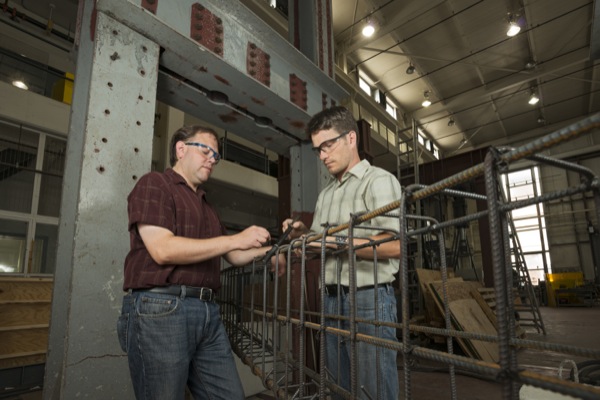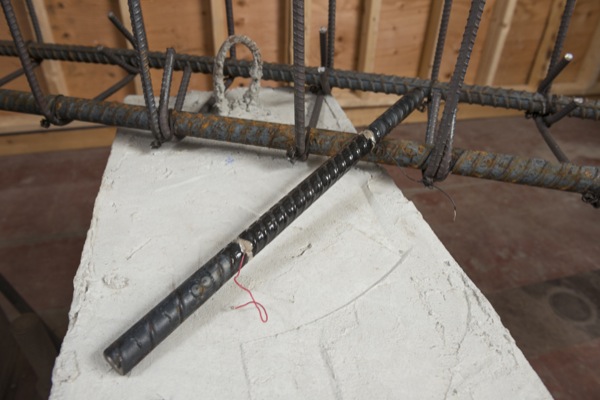


Tiny tubes tell of threat
Research team investigates carbon nanotube composites for structural health monitoring
7:59 a.m., Sept. 18, 2012--In August 2007, the I-35W Bridge over the Mississippi River in Minneapolis collapsed, killing 13 people and injuring 145. The collapse was attributed to a design deficiency that resulted in a gusset plate failing during ongoing construction work.
Now, an interdisciplinary team of researchers at the University of Delaware is developing a novel structural health monitoring system that could avert such disasters in the future.
Research Stories
Chronic wounds
Prof. Heck's legacy
Erik Thostenson and Thomas Schumacher, both affiliated faculty members in the UD Center for Composite Materials, have received a three-year $300,000 grant from the National Science Foundation to investigate the use of carbon nanotube composites as a kind of “smart skin” for structures.
In preliminary research, the two found that a carbon nanotube hybrid glass-fiber composite attached to small-scale concrete beams formed a continuous conductive skin that is exceptionally sensitive to changes in strain as well as to the development and growth of damage.
“This sensor can either be structural, where the layer of the fiber composite adds reinforcement to a deficient or damaged structure, or nonstructural, where the layer acts merely as a sensing skin,” says Schumacher, who brings to the project knowledge of structural mechanics and health monitoring of large-scale structures.
Thostenson, whose expertise lies in materials processing and characterization for sensor applications, explains that because the nanotubes are so small, they can penetrate the polymer-rich area between the fibers of individual yarn bundles as well as the spaces between the plies of a fiber composite.
“The nanotubes become completely integrated into advanced fiber composite systems, imparting new functionality without altering the microstructure of the composite,” he says.
Schumacher says the approach will address a major drawback of current SHM systems, which can cover only a finite number points.
“Selection of critical areas for monitoring remains subject to the owner’s expertise,” he explains. “The distributed sensing capability of the system we’re developing significantly increases the chance of capturing hidden or localized micro-damage that can lead to catastrophic failure if not detected early.”
Thostenson points out that a key advantage of this innovative sensor is that it can be bonded to existing structures of any shape or built into new structures during the fabrication and construction processes.
Based on their preliminary results, the researchers will now address such issues as sensor processing, characterization, and modeling as well as testing of components and complete structures.
Thostenson credits CCM with facilitating the kind of interdisciplinary approach that brought him and Schumacher together on the project. “It’s truly a 50/50 collaboration that capitalizes on our complementary expertise,” he says.
The two joke, though, about the specimen they tested at CCM during their exploratory work. “It was the smallest specimen I ever tested,” says Schumacher, but the largest one Erik ever tested.”
About the researchers
Erik Thostenson is an assistant professor in the Department of Mechanical Engineering, and Thomas Schumacher holds the same position in the Department of Civil and Environmental Engineering. They are both affiliated faculty in the Center for Composite Materials.
Founded in 1974, CCM conducts basic and applied research, educates scientists and engineers, and develops and transitions technology. Since 1985, CCM has been designated a center of excellence through seven programs. The center has some 250 affiliated personnel, more than $12 million in annual expenditures, and over 2,000 alumni worldwide. More than 3,500 companies have benefited from affiliation with CCM over the past four decades.
Article by Diane Kukich
Photo by Evan Krape









